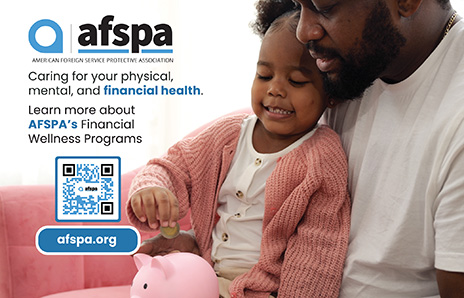Why Continued U.S. Leadership on HIV Is Essential
The end of AIDS as a public health threat is within sight. Continued vigorous U.S. support is essential to reach that goal.
BY ANGELI ACHREKAR
For more than two decades, the United States has been the preeminent leader in the global response to the human immunodeficiency virus (HIV). Through the U.S. President’s Emergency Plan for AIDS Relief (PEPFAR), and America’s critical partnerships with the Global Fund to Fight AIDS, Tuberculosis and Malaria, and the Joint United Nations Programme on HIV/AIDS (UNAIDS), the United States has saved tens of millions of lives, enhanced global appreciation for U.S. leadership, and demonstrated the transformative power of American innovation and soft power on the global stage.
American leadership in the historic effort to end AIDS is not only a story of compassion—it is a matter of national security, economic interest, and strategic influence. In 2024 UNAIDS estimates that PEPFAR returned nearly $20 in benefits for every $1 invested in eastern and southern Africa, where PEPFAR has focused its work. U.S. investments through PEPFAR have also enhanced global health stability and security, increasing demographic growth and economic productivity in 55 of America’s partners in low- and middle-income countries.
Most significantly, we are now within reach of seeing the end of HIV as a public health threat by 2030. Even with continued support, this outcome is not guaranteed, but it is certain that withdrawing from these programs now will have devastating consequences.
Proven Results
UNAIDS is proud to work closely with the U.S. government on the global HIV response. While UNAIDS represents less than 1 percent of U.S. annual investments in the global HIV response, UNAIDS’ unique country-level presence in PEPFAR-supported countries enables us to provide strategic, political, and technical support that strengthens PEPFAR’s focus, delivery, and efficiency.
The data speak for themselves. Since the peak of the AIDS epidemic in 1995, new HIV infections worldwide have declined by 60 percent, and AIDS-related deaths by 69 percent. But in PEPFAR-supported countries, the impact is even more striking. From 2010 to 2023, new infections dropped by 52 percent—far above the global average of 39 percent. AIDS-related deaths fell by 59 percent in these countries, compared to 51 percent globally. These data reflect not just amazing progress but the invaluable impact of sustained U.S. leadership and engagement—across the whole of the U.S. government (e.g., State Department, Centers for Disease Control and Prevention [CDC], Peace Corps, Department of Defense, Department of Treasury) and strategically with partner governments and communities.
Since the peak of the AIDS epidemic in 1995, new HIV infections worldwide have declined by 60 percent, and AIDS-related deaths by 69 percent.
Today, of the 31 million people around the world on HIV treatment, two-thirds receive life-saving treatment made possible by U.S. leadership through PEPFAR—more than 20 million individuals whose lives, communities, and countries have been transformed by U.S. support. This unprecedented scale-up of American-led HIV treatment has turned what was once considered an insurmountable health crisis into one of the greatest success stories in the history of global health.
Since its launch in 2003, PEPFAR has saved more than 26 million lives as documented in its annual reports to Congress. UNAIDS data and analysis confirm this figure. No other U.S. foreign assistance program has been able to deliver or document this number of lives saved. It has prevented economic and societal collapse in countries hardest hit by HIV, particularly in sub-Saharan Africa. PEPFAR’s bipartisan support from Congress—especially from important congressional leaders in foreign affairs and appropriations—has been critical to its success in significantly reducing new HIV infections and deaths and strengthening health care systems.
A Turning Point
Today, the world is at an inflection point. For the first time in the 40-year history of the AIDS epidemic, the end of AIDS as a public health threat is within reach. At the same time, however, many Americans distrust foreign assistance, and the Trump administration is moving to curtail programs and outlays.
The HIV epidemic is dynamic—it either advances or recedes. UNAIDS data and modeling confirm that if the United States continues support for PEPFAR through 2029, even on a downward trajectory, the world can still reach the 2030 target to end AIDS. This would mark a consequential victory against AIDS that would also ensure America is safer and more secure.
A retreat from U.S. leadership at this juncture, however, would be catastrophic. UNAIDS estimates that the permanent discontinuation of PEPFAR treatment and prevention programs would result in 4 million additional AIDS-related deaths and 6 million new adult infections by 2029. The toll on children would be particularly devastating: up to a million new pediatric infections and nearly 500,000 child deaths from AIDS by 2030.
UNAIDS estimates that the permanent discontinuation of PEPFAR treatment and prevention programs would result in 4 million additional AIDS-related deaths by 2029.
In contrast, continuing U.S. support ensures momentum toward self-reliance. PEPFAR partner countries are stepping up. In collaboration with UNAIDS, governments are developing HIV Response Sustainability Roadmaps to transition from foreign assistance to nationally financed and owned responses. Thirty-six countries are now implementing these road maps rapidly, underscoring a new era of shared responsibility.
American innovation is also helping lead the way. Longacting HIV prevention tools—more than 95 percent effective—are changing the prevention landscape. Continued investment in HIV prevention ensures the rapid deployment of these game-changing technologies, halting new HIV infections and accelerating progress toward the end of AIDS.
As noted recently in Senate testimony by Secretary of State Marco Rubio, the majority of the PEPFAR program is now back up and running. These programs and services, however, relate to components of PEPFAR that are covered under the “Emergency Humanitarian Waiver” that was issued by Secretary Rubio on Jan. 28, 2025. The waiver does not cover the majority of PEPFAR’s HIV prevention programs, including pre-exposure prophylaxis, as well as support for community organizations, PEPFAR’s flagship program DREAMS (Determined, Resilient, Empowered, AIDS-free, Mentored, and Safe) for women and girls, and programs for orphans and vulnerable children.
Smart Policy
U.S. leadership in the global HIV response is one of the clearest examples of what American diplomacy, values, and strategic engagement can achieve. It is not only morally right—it is smart policy. PEPFAR strengthens America’s global standing, builds resilient partnerships, and promotes a safer, healthier, and more prosperous world.
The end of AIDS is possible by 2030. But it depends on continued bipartisan commitment, visionary leadership, and strategic investment. The world is watching—and the U.S. must continue to lead.
When sharing or linking to FSJ articles online, which we welcome and encourage, please be sure to cite the magazine (The Foreign Service Journal) and the month and year of publication. Please check the permissions page for further details.
Read More...
- “PEPFAR: Making the Impossible Possible” by Deborah L. Birx, The Foreign Service Journal, May 2017
- “COVID-19 and Global Health Governance” by Jimmy Kolker, The Foreign Service Journal, July-August 2020
- “Aid freeze and the future of HIV care” by Carmen Paun and Daniel Payne, Politico, February 2025




